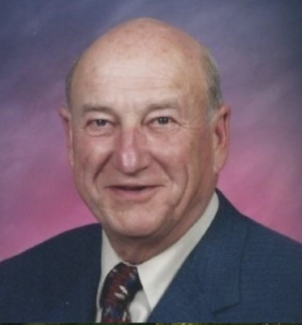“Effect of GnRH Dose at Beginning of OvSynch for Breeding of Cows Inseminated After the Double OvSynch Program” headlines the Aug. 19 Dairy Cattle Reproduction Council (DCRC) webinar, which starts at 2 p.m. Central time (USA/Canada). Fabio Lima, University of California-Davis, and Ralph Bruno, Zoetis, will lead the free, one-hour webinar.
 Double OvSynch has become the standard for dairy cattle fixed timed artificial insemination (AI) fertility programs. Research continues to find ways to increase pregnancies through adaptations of this protocol. This webinar will present data supporting the on-label use of a higher dose of gonadorelin hydrochloride (Factrel®) to improve pregnancies per AI.
Double OvSynch has become the standard for dairy cattle fixed timed artificial insemination (AI) fertility programs. Research continues to find ways to increase pregnancies through adaptations of this protocol. This webinar will present data supporting the on-label use of a higher dose of gonadorelin hydrochloride (Factrel®) to improve pregnancies per AI.
Key topics being presented include:
- Currently available tools can be used to help promote increased pregnancies in dairy cattle.
- Following protocol standard operating procedures are crucial to reproductive success.
- Only one GnRH therapy product on the market today has the on-label ability to flex its dosing size.
To register for this webinar, go to HERE and follow the prompts. If you are a DCRC member and cannot attend the live program, you may access the webinar at: www.dcrcouncil.org after Aug. 31.
DCRC applied for one Registry of Approved Continuing Education (RACE) credit for this DCRC webinar. This provides a convenient way for bovine veterinarians to earn CE credits.
Lima completed his residency in food animal reproduction and medicine, and then a PhD in reproductive health and physiology at the University of Florida. Also, Lima did postdoctoral training focused on the role of microbiome in dairy cattle health at Cornell University and took a tenure-track job as assistant professor in theriogenology at the University of Illinois. Last year, Lima joined the department of population health and reproduction at the University of California-Davis as assistant professor of livestock health and theriogenology. His research program focuses on strategies to improve health, reproduction and productivity of dairy cows, and their contribution to environmental stewardship and sustainability of the global food supply. His work integrates quantitative approaches to evaluate health, productive and reproductive performance, and multi omics data to advance the understanding of the interplay between host genomics and microbiome. He also uses animal and cell culture models to answer questions in basic reproductive physiology.
Bruno is a dairy technical service veterinarian for Zoetis in California. In 2001, he earned his Doctor of Veterinary Medicine degree from the Federal University of Lavras in Brazil. After graduation, he became the chief veterinarian in a Brazilian cooperative, which offers feed mill and veterinary services. In 2002, Bruno moved to the United States and was part of the International Dairy Fellow Program at the University of Florida department of animal science. Upon completion, he moved to UC-Davis and worked as a research assistant in the nutrition/reproduction laboratory, completed a residency program in dairy production medicine and the master in preventive veterinary medicine program before accepting a faculty position at the UC-Davis Veterinary Medicine Teaching & Research Center. Prior to joining Pfizer Animal Health (now Zoetis), Bruno was an extension dairy specialist and completed his PhD at West Texas A&M University where he researched methods for synchronization and re-synchronization of dairy cows.
For more information about DCRC’s webinars, e-mail Luciano Caixeta, DCRC Education Committee chair, at: lcaixeta@umn.edu or e-mail DCRC at: jodee@dcrcouncil.org.
The Dairy Cattle Reproduction Council is focused on bringing together all sectors of the dairy industry – producers, consultants, academia and allied industry professionals – for improved reproductive performance. DCRC provides an unprecedented opportunity for all groups to work together to take dairy cattle reproduction to the next level.
Provided by: Dairy Cattle Reproduction Council




